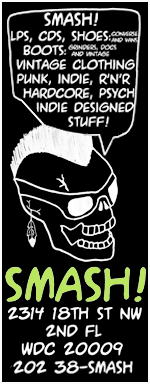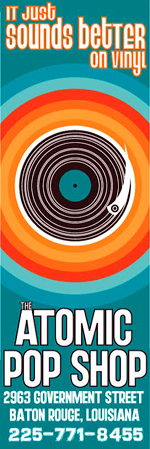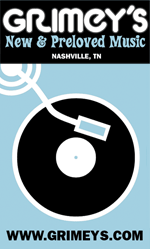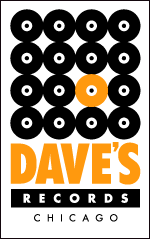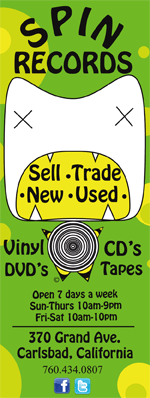
Part three of the TVD Record Store Club’s look at the new and reissued releases presently in stores for September 2021. Part one is here and part two is here.
 NEW RELEASE PICS: Satoko Fujii, Piano Music (Libra) This CD is a life-affirming gift from one of modern music’s greatest pianists. It offers two long tracks, the first, “Shiroku,” lasting 19 minutes, the second, “Fuwarito,” reaching 27, that wouldn’t exist except for the Covid-19 pandemic. They capture Fujii alone, and not in the long-established solo mode, but instead creating sound collages built from recordings of prepared piano, Fujii stitching them together seamlessly using a computer at home during quarantine. Sound collage is a new discipline for Fujii, but prepared piano is not (interestingly, one of her methods is placing a guitar Ebow on the strings), so that this excursion into unfamiliar territory is grounded in expertise. I mention this in part because the drones in “Shiroku” are truly first rate and additionally striking, as the sustained resonances were assembled from pieces lasting only one or two minutes. In his enjoyable liner notes for the disc, Shiro Matsuo mentions that not all of Fujii’s fans will be pleased with Piano Music’s contents, but I sure am. The disc is an astounding accomplishment. A
NEW RELEASE PICS: Satoko Fujii, Piano Music (Libra) This CD is a life-affirming gift from one of modern music’s greatest pianists. It offers two long tracks, the first, “Shiroku,” lasting 19 minutes, the second, “Fuwarito,” reaching 27, that wouldn’t exist except for the Covid-19 pandemic. They capture Fujii alone, and not in the long-established solo mode, but instead creating sound collages built from recordings of prepared piano, Fujii stitching them together seamlessly using a computer at home during quarantine. Sound collage is a new discipline for Fujii, but prepared piano is not (interestingly, one of her methods is placing a guitar Ebow on the strings), so that this excursion into unfamiliar territory is grounded in expertise. I mention this in part because the drones in “Shiroku” are truly first rate and additionally striking, as the sustained resonances were assembled from pieces lasting only one or two minutes. In his enjoyable liner notes for the disc, Shiro Matsuo mentions that not all of Fujii’s fans will be pleased with Piano Music’s contents, but I sure am. The disc is an astounding accomplishment. A
 Norman W. Long, BLACK BROWN GRAY GREEN (Hausu Mountain) Long is a Chicago-based guy who’s toured as part of Angel Bat Dawid and tha Brothahood and collaborated with Damon Locks and members of Tortoise (amongst others), but he’s mostly known as a sound artist with an emphasis on field recordings (often manipulated field recordings, which are the best kind). This release (available on CD and cassette) opens with the nearly 23-minute “SOUTHEAST – LIVE 2019,” a recording of a performance held at the Experimental Sound Studio on May 17 of the year in the piece’s title. Listened to loud on headphones, the work is immersive and holds stretches that border on the overwhelming. If altered to varying degrees by Long’s hand, much of the progression documents recognizable sources (crickets chirping and birdsong, for two examples), but there’s still plenty of mystery in the unwinding. It’s followed by four worthwhile pieces recorded in Long’s home studio that utilize sounds captured near his residence in Chicago’s south side. Overall, a brilliant and admirable release. A-
Norman W. Long, BLACK BROWN GRAY GREEN (Hausu Mountain) Long is a Chicago-based guy who’s toured as part of Angel Bat Dawid and tha Brothahood and collaborated with Damon Locks and members of Tortoise (amongst others), but he’s mostly known as a sound artist with an emphasis on field recordings (often manipulated field recordings, which are the best kind). This release (available on CD and cassette) opens with the nearly 23-minute “SOUTHEAST – LIVE 2019,” a recording of a performance held at the Experimental Sound Studio on May 17 of the year in the piece’s title. Listened to loud on headphones, the work is immersive and holds stretches that border on the overwhelming. If altered to varying degrees by Long’s hand, much of the progression documents recognizable sources (crickets chirping and birdsong, for two examples), but there’s still plenty of mystery in the unwinding. It’s followed by four worthwhile pieces recorded in Long’s home studio that utilize sounds captured near his residence in Chicago’s south side. Overall, a brilliant and admirable release. A-
 Sonny Vincent, Snake Pit Therapy (Svart) For a long time, Sonny Vincent was mostly noted for singing and playing guitar in the first-wave NYC punk band Testors. But as documented by Diamond Distance & Liquid Fury- Sonny Vincent: Primitive 1969-76, which came out last year via HoZac, Vincent was haunting recording studios much earlier than that (in the protopunk outfits Distance, Fury, and Liquid Diamonds). Even better, he’s remains active and continues to pack a wallop with this set of 15 songs, its title shared with Vincent’s recent book of recollections, poetry and fiction. That he’s still dishing out worthy stuff isn’t exactly a surprise, as his 2014 album Spiteful (featuring Rat Scabies, Glen Matlock, and Steve Mackay) was quite the solid undertaking. Vincent reliably radiates a Noo Yawk street-rockin’ swagger, but importantly, he doesn’t go overboard with the attitude, instead focusing his energies on writing songs of high quality. Snake Pit Therapy is no dress-up retro show, rocking hard and catchy enough to please fans of mid-period Hüsker Dü (Vincent has played with Greg Norton). Thoroughly vital. A-
Sonny Vincent, Snake Pit Therapy (Svart) For a long time, Sonny Vincent was mostly noted for singing and playing guitar in the first-wave NYC punk band Testors. But as documented by Diamond Distance & Liquid Fury- Sonny Vincent: Primitive 1969-76, which came out last year via HoZac, Vincent was haunting recording studios much earlier than that (in the protopunk outfits Distance, Fury, and Liquid Diamonds). Even better, he’s remains active and continues to pack a wallop with this set of 15 songs, its title shared with Vincent’s recent book of recollections, poetry and fiction. That he’s still dishing out worthy stuff isn’t exactly a surprise, as his 2014 album Spiteful (featuring Rat Scabies, Glen Matlock, and Steve Mackay) was quite the solid undertaking. Vincent reliably radiates a Noo Yawk street-rockin’ swagger, but importantly, he doesn’t go overboard with the attitude, instead focusing his energies on writing songs of high quality. Snake Pit Therapy is no dress-up retro show, rocking hard and catchy enough to please fans of mid-period Hüsker Dü (Vincent has played with Greg Norton). Thoroughly vital. A-
 REISSUE/ARCHIVAL PICK: Sheila Jordan, Comes Love: Lost Session 1960 (Capri) The 11 tracks on this CD predate Jordan’s classic Portrait of Sheila album on Blue Note by two years, although her recording debut was singing four songs on an obscure LP credited to bassist Peter Ind in 1960. It’s unclear which occurred first, the Ind session or this date, as the specifics of Comes Love are a little hazy; we don’t even know who the accompanying musicians are. They might be John Knapp on piano, Ziggy Wellman on drums, and either Steve Swallow (who played on Portrait of Sheila) or Gene Perlman on bass (as they were Jordan’s band during her engagements at the Greenwich Village club the Page 3 around this time), but there’s really no way to be sure. What is abundantly clear is that Comes Love documents Jordan in strong voice, with nary a subpar or even a tentative selection in the bunch. As I’ve always found jazz singing to be something of a tough sell (yes there are plenty of exceptions), this is no small feat. Is it as strong as Portrait of Sheila? No, but it does find her hovering in the proximity of greatness. A-
REISSUE/ARCHIVAL PICK: Sheila Jordan, Comes Love: Lost Session 1960 (Capri) The 11 tracks on this CD predate Jordan’s classic Portrait of Sheila album on Blue Note by two years, although her recording debut was singing four songs on an obscure LP credited to bassist Peter Ind in 1960. It’s unclear which occurred first, the Ind session or this date, as the specifics of Comes Love are a little hazy; we don’t even know who the accompanying musicians are. They might be John Knapp on piano, Ziggy Wellman on drums, and either Steve Swallow (who played on Portrait of Sheila) or Gene Perlman on bass (as they were Jordan’s band during her engagements at the Greenwich Village club the Page 3 around this time), but there’s really no way to be sure. What is abundantly clear is that Comes Love documents Jordan in strong voice, with nary a subpar or even a tentative selection in the bunch. As I’ve always found jazz singing to be something of a tough sell (yes there are plenty of exceptions), this is no small feat. Is it as strong as Portrait of Sheila? No, but it does find her hovering in the proximity of greatness. A-


 Boise, ID | The Record Exchange: New Owners, Same Style: The Record Exchange has been around for almost 45 years and it’s become an institution of downtown Boise. Employees tend to work there for decades and it’s a kind of home away from home for music lovers in the community. Founders Michael Bunnell and Jil Sevy worked hard over the years to create an inclusive space. They cobbled together a store that does it all — employs a knowledgeable and diverse staff; sells all types of music products, coffee and gifts; and hosts in-store shows with huge stars — all the while keeping the store welcoming and open to people. Fortunately for Idaho the two have left behind a place that many people see as more than just a store. “For years our hope was that when we were ready to sell employees would step up,” said Bunnell. “We’ve built something special here and I can’t imagine Boise without it.
Boise, ID | The Record Exchange: New Owners, Same Style: The Record Exchange has been around for almost 45 years and it’s become an institution of downtown Boise. Employees tend to work there for decades and it’s a kind of home away from home for music lovers in the community. Founders Michael Bunnell and Jil Sevy worked hard over the years to create an inclusive space. They cobbled together a store that does it all — employs a knowledgeable and diverse staff; sells all types of music products, coffee and gifts; and hosts in-store shows with huge stars — all the while keeping the store welcoming and open to people. Fortunately for Idaho the two have left behind a place that many people see as more than just a store. “For years our hope was that when we were ready to sell employees would step up,” said Bunnell. “We’ve built something special here and I can’t imagine Boise without it.  Middlesbrough, UK | Press-On Vinyl plant in Middlesbrough to start production this autumn: Press-On Vinyl, a vinyl record pressing plant located at Middlesbrough’s Tees Advanced Manufacturing Park (TeesAMP), was first announced back in April, and today (14 September) it’s been announced that the pressing plant will begin production this autumn after they secured investment from Futuresound Group. News of their launch comes amid vinyl delays experienced across the independent music industry, which is due to Brexit and the COVID-19 pandemic as most of the vinyl pressing plants are based in Europe. Where possible, Press-On Vinyl will source raw materials as locally as possible to reduce carbon footprint, and when production begins in autumn it’ll be open to a selection of record labels, independent artists and partners. Futuresound Group MD Colin Oliver said, “Though the recent restrictions put a lot of our activities on hold we have been working hard in a number of areas, and when Press-On vinyl came onto my radar having two record labels as part of the group I could see the issues with the UK vinyl supply and
Middlesbrough, UK | Press-On Vinyl plant in Middlesbrough to start production this autumn: Press-On Vinyl, a vinyl record pressing plant located at Middlesbrough’s Tees Advanced Manufacturing Park (TeesAMP), was first announced back in April, and today (14 September) it’s been announced that the pressing plant will begin production this autumn after they secured investment from Futuresound Group. News of their launch comes amid vinyl delays experienced across the independent music industry, which is due to Brexit and the COVID-19 pandemic as most of the vinyl pressing plants are based in Europe. Where possible, Press-On Vinyl will source raw materials as locally as possible to reduce carbon footprint, and when production begins in autumn it’ll be open to a selection of record labels, independent artists and partners. Futuresound Group MD Colin Oliver said, “Though the recent restrictions put a lot of our activities on hold we have been working hard in a number of areas, and when Press-On vinyl came onto my radar having two record labels as part of the group I could see the issues with the UK vinyl supply and 





 Record Store Day reveals full list of exclusive Black Friday vinyl releases: More exclusive vinyl albums coming in November. Black Friday isn’t all about the best TV deals. OK, so it is mostly about that, but it’s also a chance to grab some limited-edition, rare and exclusive vinyl releases thanks to Record Store Day’s participation in the global shopping event. The organisation behind the biggest annual celebration of the beloved vinyl format has just announced its full list of releases for this Black Friday. The list includes anniversary editions, rarities and reissues from Ghostpoet, Hall & Oates, Fleetwood Mac, Lana Del Rey, U2, Tricky and John Carpenter, to name a few. These (and others, listed below) will only be available in independent record stores on Black Friday, which this year takes place on Friday 26th November. You can see a full list of those participating record stores in the UK here. So, while you’re trying to bag a deal on speakers, TVs and headphones, or anything else for that matter, don’t forget to take some time out to pick up some new vinyl.
Record Store Day reveals full list of exclusive Black Friday vinyl releases: More exclusive vinyl albums coming in November. Black Friday isn’t all about the best TV deals. OK, so it is mostly about that, but it’s also a chance to grab some limited-edition, rare and exclusive vinyl releases thanks to Record Store Day’s participation in the global shopping event. The organisation behind the biggest annual celebration of the beloved vinyl format has just announced its full list of releases for this Black Friday. The list includes anniversary editions, rarities and reissues from Ghostpoet, Hall & Oates, Fleetwood Mac, Lana Del Rey, U2, Tricky and John Carpenter, to name a few. These (and others, listed below) will only be available in independent record stores on Black Friday, which this year takes place on Friday 26th November. You can see a full list of those participating record stores in the UK here. So, while you’re trying to bag a deal on speakers, TVs and headphones, or anything else for that matter, don’t forget to take some time out to pick up some new vinyl.  Bangkok, TH | Where to find Bangkok’s best record stores and vinyl bars: Get in the groove with this primer to vinyl culture in Bangkok. The debate between analog and digital music will never end. Even if today’s technology enables you to listen to music effortlessly, many believe it will never replicate the concert-like experience you get from listening to vinyl. It’s no wonder we’re seeing a resurgence in analog music appreciation in Bangkok. From old-school record shops to swanky vinyl bars, these places will help you build your collection, upgrade your gear, and join the vinyl revolution. Tonchabab Record Shop: Teeming with old and new records covering genres from Thailand and all over the world, Tonchabab is the kind of
Bangkok, TH | Where to find Bangkok’s best record stores and vinyl bars: Get in the groove with this primer to vinyl culture in Bangkok. The debate between analog and digital music will never end. Even if today’s technology enables you to listen to music effortlessly, many believe it will never replicate the concert-like experience you get from listening to vinyl. It’s no wonder we’re seeing a resurgence in analog music appreciation in Bangkok. From old-school record shops to swanky vinyl bars, these places will help you build your collection, upgrade your gear, and join the vinyl revolution. Tonchabab Record Shop: Teeming with old and new records covering genres from Thailand and all over the world, Tonchabab is the kind of 






 Kent, UK | Eil.com: Behind the scenes of the world’s biggest online rare records store, based in Meopham, near Gravesend: Hidden away on an unassuming industrial estate, to the south of Gravesend, lies the home of the world’s biggest online record store; a haven for rare and collectible items spanning the generations. While it may not look up to much from the outside – trains trundle along the railway tracks to nearby Meopham station just yards away – inside it is, to many, a palace of dreams – with row upon row of bulging shelves containing more than a quarter of a million sought-after items from the world’s biggest names. It is to an avid record collector what Willy Wonka’s factory was to a chocolate aficionado. This is the home of Eil.com; a company which has long boasted a global customer base and one which it has carefully cultivated over the years. If you’re after a rare Beatles first edition album in tip-top condition, or perhaps a Madonna picture disc, then the chances are this is where you’ll look. After a tour programme, platinum disk, signed album? Then
Kent, UK | Eil.com: Behind the scenes of the world’s biggest online rare records store, based in Meopham, near Gravesend: Hidden away on an unassuming industrial estate, to the south of Gravesend, lies the home of the world’s biggest online record store; a haven for rare and collectible items spanning the generations. While it may not look up to much from the outside – trains trundle along the railway tracks to nearby Meopham station just yards away – inside it is, to many, a palace of dreams – with row upon row of bulging shelves containing more than a quarter of a million sought-after items from the world’s biggest names. It is to an avid record collector what Willy Wonka’s factory was to a chocolate aficionado. This is the home of Eil.com; a company which has long boasted a global customer base and one which it has carefully cultivated over the years. If you’re after a rare Beatles first edition album in tip-top condition, or perhaps a Madonna picture disc, then the chances are this is where you’ll look. After a tour programme, platinum disk, signed album? Then  Every Picture Tells A Story, Or, How I Recreated My Record Collection, and Then Some: Today’s renaissance of vinyl as a chosen physical music format represents an opportunity for baby boomers to recapture their collective youth. In the 1970s, record stores were the place to hang out and learn about music and life. I foolishly sold most of my 4,000-LP collection in 2010, and within two years realized what a colossal mistake I had made. I’ve spent the past eight years rebuilding much of what I previously owned, and then some. About three quarters of the records came from the used bins of about a dozen stores in and around Long Island, although most were culled from Record Reserve in Northport, NY, where Jack Kerouac once spent time drinking at the still-operating local watering hole Gunther’s Tap Room. From 2015 to 2019, I’d spell Record Reserve’s proprietor Tim Clair occasionally. When I was a teenager I always wanted to work in a record store, and instead was delegated to the dairy department of the Big Apple supermarket in Commack.
Every Picture Tells A Story, Or, How I Recreated My Record Collection, and Then Some: Today’s renaissance of vinyl as a chosen physical music format represents an opportunity for baby boomers to recapture their collective youth. In the 1970s, record stores were the place to hang out and learn about music and life. I foolishly sold most of my 4,000-LP collection in 2010, and within two years realized what a colossal mistake I had made. I’ve spent the past eight years rebuilding much of what I previously owned, and then some. About three quarters of the records came from the used bins of about a dozen stores in and around Long Island, although most were culled from Record Reserve in Northport, NY, where Jack Kerouac once spent time drinking at the still-operating local watering hole Gunther’s Tap Room. From 2015 to 2019, I’d spell Record Reserve’s proprietor Tim Clair occasionally. When I was a teenager I always wanted to work in a record store, and instead was delegated to the dairy department of the Big Apple supermarket in Commack. 

 Personally, what has always pissed me off about the song is the band’s claim that the horse has no name. That’s balderdash. Of course the horse has a name. It may not be Trigger or Mr. Ed or Black Beauty, but it’s something. Vocalist Dewey Bunnell was probably just too lazy to ask the horse its name. “I’m Conway,” the horse would have replied. Or, “I’m Luther, good to meet ya.” Of course the horse could have offered Dewey his name. But a horse has its dignity.
Personally, what has always pissed me off about the song is the band’s claim that the horse has no name. That’s balderdash. Of course the horse has a name. It may not be Trigger or Mr. Ed or Black Beauty, but it’s something. Vocalist Dewey Bunnell was probably just too lazy to ask the horse its name. “I’m Conway,” the horse would have replied. Or, “I’m Luther, good to meet ya.” Of course the horse could have offered Dewey his name. But a horse has its dignity.

 Nashville, TN | Nashville record stores: Where to find used vinyl in Music City. Nashville is Music City, so it’s no surprise the city has some of the best record shops around. From massive used music warehouses to a former church building to hole-in-the-wall shops decorated only by 12-inch record sleeves, here’s where to go
Nashville, TN | Nashville record stores: Where to find used vinyl in Music City. Nashville is Music City, so it’s no surprise the city has some of the best record shops around. From massive used music warehouses to a former church building to hole-in-the-wall shops decorated only by 12-inch record sleeves, here’s where to go  War Child re-release four classic albums 1 Love, Hope, Help! A Day In The Life and War Child Presents Heroes: The four classic albums, which were released for War Child between 2002 and 2009 feature the likes of Muse, Stereophonics, Oasis, Lily Allen, Radiohead and more. War Child have re-released four of their classic albums today (Friday 10 September). The charity – which strives to protect, educate and stand up for the rights of
War Child re-release four classic albums 1 Love, Hope, Help! A Day In The Life and War Child Presents Heroes: The four classic albums, which were released for War Child between 2002 and 2009 feature the likes of Muse, Stereophonics, Oasis, Lily Allen, Radiohead and more. War Child have re-released four of their classic albums today (Friday 10 September). The charity – which strives to protect, educate and stand up for the rights of 




















